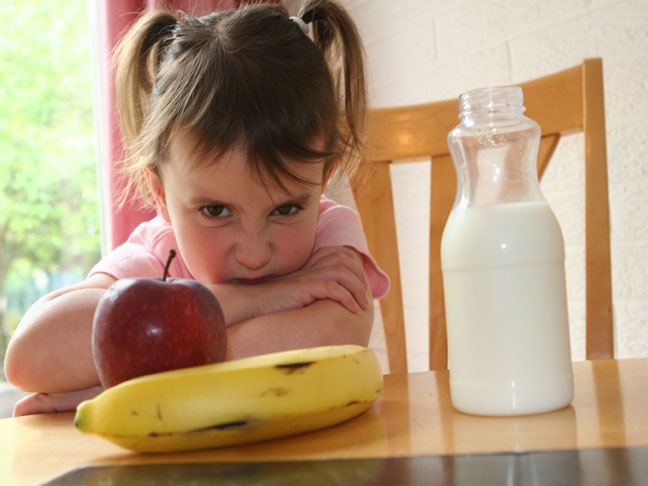For me, that right there is the distinction I have made. There is little convincing a child (or an adult, for that matter) of anything, but there is a real possibility of enrolling them in the idea that eating healthy can be more fun than they imagine, in addition to teaching them healthy habits in the process. And some kids in general, just seem to be “fussy eaters” in that they are very specific with which foods they will and will not eat.
Food Is Not Currency
We all know as grown-ups, especially as women, that we have a lot of emotions tied in with food. Our relationship with food began when we were small, literally on a neurological level. As our neurons formed connections in our brain we made associations between actions and feelings in our lives. I frequently see parents use junk food as a way to bribe children into good behavior. Do we really want to ingrain in our children’s brains that good behavior should be linked to sugar and fast food? Or are we just teaching them the way to feel good is to eat junk? Consider other methods of reward and leave junk food out of the picture.
No Stress Dinner Time
It can be frustrating trying to get children to eat healthy. They go through phases where they don’t want to eat much outside of their safety zone. For some of them, their young taste buds just cannot handle intense flavors. For others…well, who knows! The fact of the matter is, though, neither parents nor children enjoy when the dinner table becomes a stressful environment. Set simple rules for your children and stick to them.
There are two schools of thought on dinner time rules – one side says only offer the same food the rest of the family is eating and consider setting a rule like, “One spoonful of everything on the table must be consumed.” If they don’t like dinner, they go to bed hungry. Children learn to respect the food they are offered and that they will not get their way (i.e. their favorite food) by fussing.
If that does not fit with your parenting style, consider this – if they don’t like it, don’t waste it on them! If the rest of the family is eating steak and your little one can’t stand steak, don’t make them eat it. Grill up a hot dog instead. Make sure the alternative is something easy to make, or enroll your child in making their entrée for themselves. The rest of the family will enjoy the extra steak and your little one will enjoy not being tortured into eating it. They might even learn some kitchen skills in the process!
Food Can Be Fun
Find ways to make games out of healthy food. Just as we can accidentally make bad associations with food, we can intentionally make good ones. Chop up a bunch of raw vegetables, grab some paper plates and make artwork. Who can make the best funny clown face? Who can make an animal? When you are all done – it’s time to eat the artwork!
Feel Good About Good Food…as a Family
What if dessert in your house looked like a fresh fruit salad instead of something processed and sugary? What if the family took on a project of a backyard or balcony garden and in the process your children learned about where their food comes from and what it means to be organic? What if your little one helped you to prepare dinner and became excited about making the food as opposed to eating out or using the microwave?
Though it is not always the easiest or quickest route, teaching our children about food is a great opportunity for us as adults to set a good example and lead healthier lives ourselves. Make it a family project to learn about food, to understand what “good” food is, and enjoy it together.
Start making the connections in your child’s brain that food is fun and good food is fun to eat. The sooner we can make this connection, the more likely your child will grow up with healthy eating habits, both emotionally and physically, and the less likely it is for your dinner table to become a battle ground.
